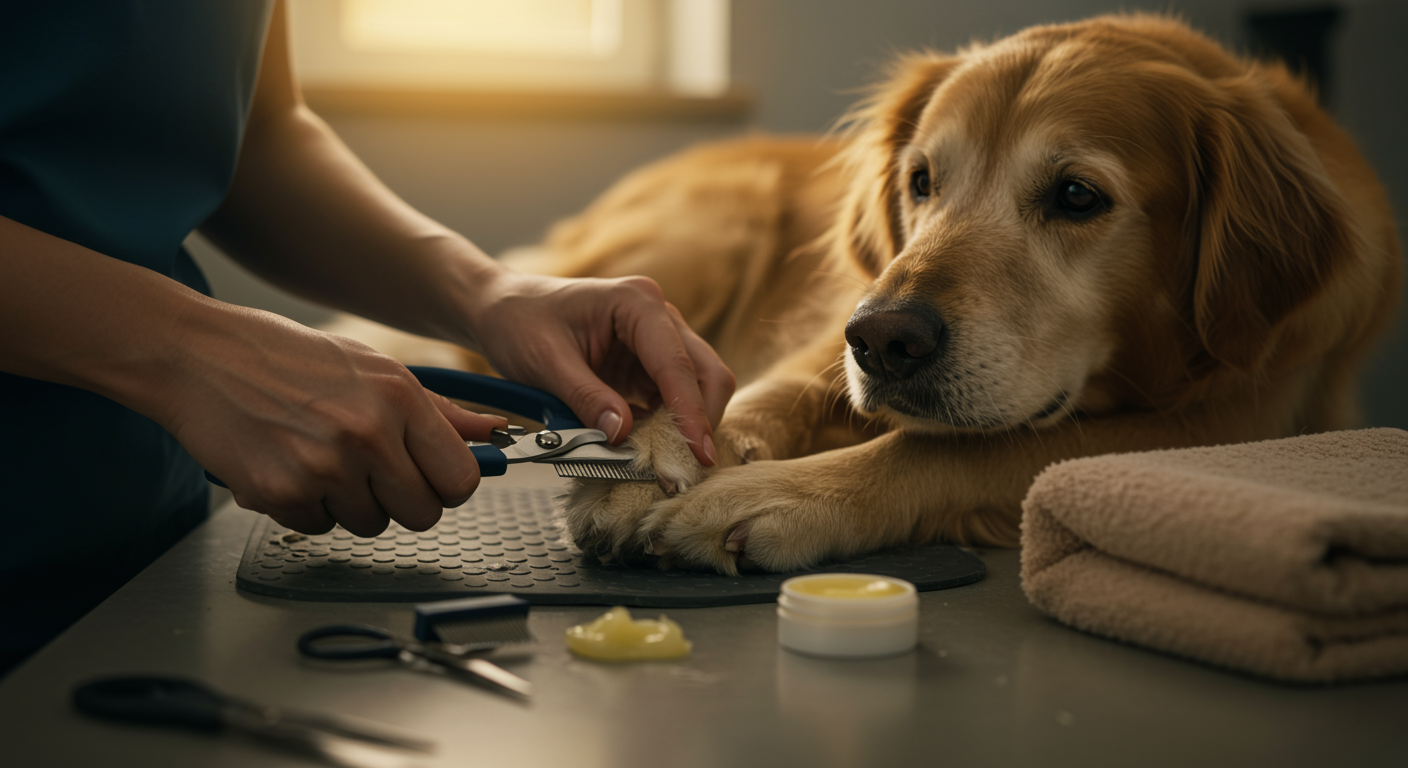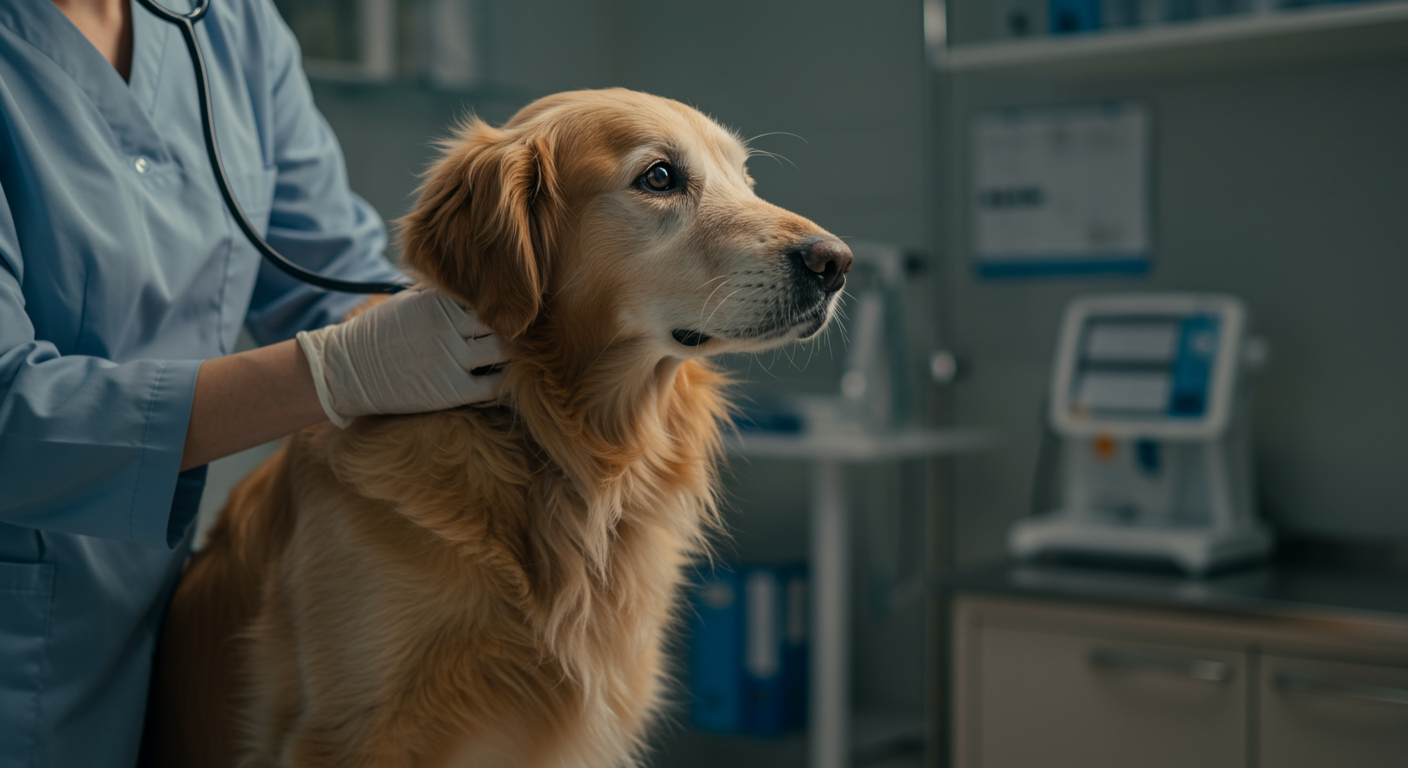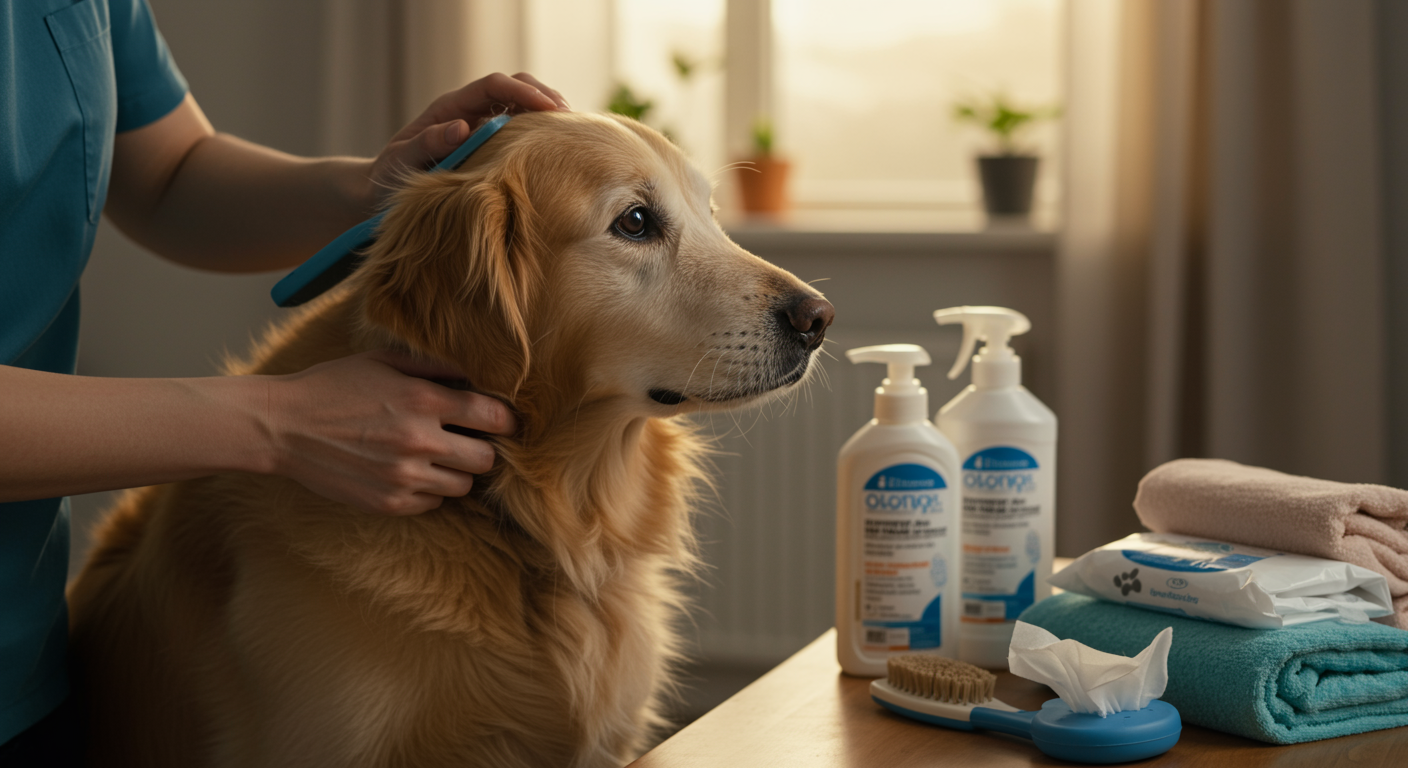Proper nail and paw pad care becomes increasingly critical as Golden Retrievers age, yet it remains one of the most overlooked aspects of senior dog health maintenance. Senior Golden Retrievers face unique challenges related to mobility, circulation, and general health that directly impact their paw health and overall comfort.
As dogs age, their activity levels typically decrease, leading to slower natural nail wear and increased risk of overgrowth complications. Additionally, senior Golden Retrievers may develop arthritis or other mobility issues that make regular grooming and paw maintenance more challenging for both the dog and the owner.
Understanding the specific needs of aging paws and implementing proper care protocols can significantly improve your senior Golden Retriever’s comfort, mobility, and overall quality of life. This comprehensive guide provides detailed strategies for maintaining optimal paw health throughout your dog’s golden years.
Understanding Senior Paw Health Changes
Age-Related Physiological Changes
Circulation and Blood Flow
Senior Golden Retrievers experience decreased circulation in their extremities, which can lead to slower healing, increased sensitivity, and changes in nail and pad texture. Reduced blood flow affects the delivery of nutrients to nail beds and paw pads, making them more susceptible to injury and slower to recover from minor trauma.
The decreased circulation also contributes to changes in nail growth patterns, often resulting in thicker, more brittle nails that require specialized care techniques. Paw pads may become drier and less elastic, increasing the risk of cracking and discomfort.
Mobility Impact on Natural Wear
Reduced activity levels in senior dogs mean less natural nail wear from walking and running on various surfaces. This leads to faster overgrowth and increased risk of nail-related complications such as ingrown nails, splitting, and interference with normal gait patterns.
The decreased natural wear also affects paw pad conditioning, as regular contact with different textures helps maintain pad thickness and resilience. Senior dogs spending more time on soft surfaces may develop more sensitive paw pads.
Common Paw Problems in Senior Golden Retrievers
Overgrown Nails and Complications
Overgrown nails in senior Golden Retrievers can cause significant problems beyond simple discomfort. Long nails alter the dog’s gait, potentially exacerbating arthritis and joint problems. They can also curve and grow into paw pads, causing pain and potential infection.
The quick (blood supply within the nail) grows longer in overgrown nails, making trimming more challenging and increasing the risk of bleeding during nail care procedures. This creates a cycle where nail care becomes more difficult and stressful for both dog and owner.
Pad Dryness and Cracking
Senior Golden Retrievers commonly develop dry, cracked paw pads due to decreased natural oil production and reduced circulation. These cracks can become deep enough to cause pain during walking and may serve as entry points for bacteria and other pathogens.
Environmental factors such as hot pavement, cold weather, and chemical exposure can worsen pad condition in senior dogs whose natural protective mechanisms are already compromised by age.
Essential Nail Care for Senior Golden Retrievers
Nail Trimming Techniques and Frequency
Proper Trimming Methods
Regular nail trimming is crucial for senior Golden Retrievers, typically required every 2-3 weeks depending on individual growth rates and activity levels. The process requires patience, proper tools, and techniques adapted to the dog’s comfort and mobility limitations.
Using high-quality nail clippers designed for large dogs ensures clean cuts that minimize stress on the nail structure. Guillotine-style clippers work well for most Golden Retrievers, while scissor-type clippers may be better for very thick or brittle nails.
Managing Anxiety and Stress
Senior dogs may be more sensitive to handling and grooming procedures, making gradual conditioning and positive reinforcement essential. Start with short sessions focusing on paw handling without trimming, gradually building tolerance through treats and praise.
Creating a calm, comfortable environment with non-slip surfaces helps reduce anxiety during nail care sessions. Some senior dogs benefit from having procedures performed while lying down to reduce stress on arthritic joints.
Advanced Nail Care Considerations
Dealing with Thick or Brittle Nails
Senior Golden Retrievers often develop thicker, more brittle nails that require special handling. Soaking paws in warm water before trimming can soften nails and make cutting easier and less traumatic for the nail structure.
For extremely thick nails, filing or using a nail grinder after initial trimming can help achieve the desired length while reducing stress on the nail and quick. This gradual approach is particularly beneficial for anxious or sensitive senior dogs.
Professional Grooming Integration
Regular professional grooming sessions can supplement home care, especially for senior dogs with mobility issues or owners who are uncomfortable with nail trimming. Professional groomers have specialized tools and techniques for managing difficult nails safely.
Establishing a relationship with a groomer experienced in senior dog care ensures consistent, appropriate nail maintenance and early identification of potential problems that may require veterinary attention.
Comprehensive Paw Pad Care
Daily Inspection and Maintenance
Visual and Physical Examination
Daily paw inspections become increasingly important for senior Golden Retrievers due to their increased susceptibility to injuries and slower healing rates. Check for cuts, cracks, foreign objects, swelling, or unusual odors that may indicate infection or injury.
Pay particular attention to the spaces between toes where moisture and debris can accumulate, creating conditions favorable for bacterial or fungal growth. Early detection of problems allows for prompt treatment and prevents minor issues from becoming serious complications.
Cleaning Protocols
Regular paw cleaning helps prevent infections and maintains pad health. Use lukewarm water and mild, dog-safe soap to gently clean paws, paying attention to areas between toes and around nail beds.
Thoroughly dry paws after cleaning, especially between toes, to prevent moisture-related skin problems. For dogs with mobility issues, waterless paw cleaners can provide effective cleaning with less stress and positioning requirements.
Moisturizing and Protection
Appropriate Moisturizing Products
Senior Golden Retrievers benefit from regular paw pad moisturizing using products specifically designed for dogs. Human lotions and moisturizers can contain ingredients toxic to dogs and should never be used on paw pads.
Dog-safe paw balms containing ingredients like shea butter, coconut oil, or specialized wax formulations provide effective moisturizing while creating a protective barrier against environmental irritants.
Application Techniques
Apply moisturizing products when the dog is calm and relaxed, ideally before rest periods to allow absorption without immediate licking. Massage the product gently into paw pads, avoiding excessive amounts that might make surfaces slippery.
For dogs that immediately lick treated paws, consider using protective booties for short periods after application, or apply products just before walks when the dog’s attention will be focused elsewhere.
Paw Care Management Table
| Care Aspect | Frequency | Tools Needed | Senior-Specific Considerations | Warning Signs |
|---|---|---|---|---|
| Nail Trimming | Every 2-3 weeks | Quality clippers, file, styptic powder | Soften with warm water, shorter sessions | Overgrowth, splitting, ingrown nails |
| Pad Inspection | Daily | Good lighting, magnifying glass | Check for decreased sensation | Cuts, swelling, unusual odor, limping |
| Paw Cleaning | As needed | Lukewarm water, dog-safe soap | Gentle handling for arthritic dogs | Persistent dirt, sticky substances |
| Moisturizing | 2-3 times weekly | Dog-safe paw balm | Focus on dry, cracked areas | Excessive dryness, deep cracks |
| Professional Care | Every 6-8 weeks | N/A – groomer provided | Choose senior-experienced groomers | Anxiety, difficult handling |
Environmental Considerations and Protection
Seasonal Paw Care Adjustments
Winter Protection Strategies
Cold weather presents unique challenges for senior Golden Retriever paw care. Ice, snow, and chemical de-icers can cause significant damage to sensitive senior paw pads. Pre-walk paw balm application creates a protective barrier against these environmental hazards.
Post-walk paw cleaning becomes essential during winter months to remove ice-melting chemicals that can cause chemical burns or systemic toxicity if ingested through licking. Lukewarm water rinses followed by thorough drying help prevent ice formation between toes.
Summer Heat Management
Hot pavement and surfaces can cause severe burns to senior paw pads, which may be less sensitive to temperature changes due to age-related nerve changes. Test surface temperature with your hand before walks, and consider protective booties for extended outdoor activities.
Early morning or evening walks help avoid peak heat periods, while paw balms with cooling properties can provide additional comfort and protection during unavoidable hot surface exposure.
Indoor Environment Optimization
Flooring Considerations
Senior Golden Retrievers benefit from non-slip flooring surfaces that provide traction without being abrasive to sensitive paw pads. Area rugs, yoga mats, or specialized pet-safe flooring can improve mobility while protecting paws.
Avoid highly textured surfaces that might cause excessive wear or irritation to already sensitive senior paw pads. Smooth surfaces should be treated with non-slip solutions to prevent falls and injuries.
Chemical Exposure Prevention
Household cleaning products, lawn treatments, and other chemicals pose increased risks to senior dogs who may have decreased awareness or slower reaction times. Store chemicals safely and ensure treated areas are completely dry before allowing paw contact.
Consider switching to pet-safe cleaning products and lawn care solutions to minimize chemical exposure risks for your senior Golden Retriever.
Health Monitoring and Veterinary Care
Recognizing Serious Problems
Infection Indicators
Senior Golden Retrievers are more susceptible to paw infections due to compromised immune systems and slower healing rates. Watch for persistent swelling, discharge, foul odors, or excessive licking that may indicate bacterial or fungal infections requiring veterinary treatment.
Changes in gait or reluctance to walk may signal pain from paw problems that aren’t immediately visible. Senior dogs may not show obvious signs of discomfort, making careful observation crucial for early problem detection.
When to Seek Professional Help
Any deep cuts, persistent swelling, or signs of infection warrant immediate veterinary attention. Senior dogs’ slower healing rates mean that minor problems can quickly become serious complications without proper treatment.
Regular veterinary check-ups should include paw examinations, especially for senior dogs with diabetes or other conditions that can affect circulation and healing in extremities.
Integrating Paw Care with Overall Health Management
Arthritis and Mobility Connections
Proper paw care directly impacts mobility and comfort in senior Golden Retrievers with arthritis. Well-maintained nails and healthy paw pads improve traction and reduce stress on joints during movement.
Overgrown nails can alter gait patterns, placing additional stress on already compromised joints and potentially accelerating arthritis progression. Regular nail maintenance is therefore crucial for overall joint health management.
Circulation and Diabetes Considerations
Senior Golden Retrievers with diabetes require extra attention to paw health due to increased infection risks and slower healing rates. Daily inspections become even more critical, and any injuries should receive immediate veterinary attention.
Maintaining optimal blood sugar levels through proper diabetes management supports better circulation and healing in extremities, making paw care more effective and reducing complication risks.
Long-term Paw Health Maintenance
Preventive Care Strategies
Building Positive Associations
Creating positive experiences around paw handling from an early age helps senior dogs tolerate necessary care procedures. For dogs new to intensive paw care, gradual conditioning with high-value treats and praise can improve cooperation.
Regular, gentle paw handling during calm moments helps maintain tolerance and allows for early detection of developing problems before they become serious complications requiring more intensive intervention.
Equipment and Supply Management
Maintaining appropriate tools and supplies ensures consistent paw care quality. Replace worn clippers, maintain supplies of appropriate balms and cleaning products, and consider backup options for dogs with specific sensitivities or preferences.
Quality tools designed for senior dog needs, such as ergonomic clippers for arthritic hands or specialized balms for very dry pads, can make care procedures more effective and comfortable for both dog and owner.
Quality of Life Enhancement
Comfort Optimization
Proper paw care significantly impacts overall comfort and quality of life for senior Golden Retrievers. Well-maintained paws improve mobility, reduce pain, and allow for continued enjoyment of walks and outdoor activities.
The psychological benefits of comfortable paws extend beyond physical comfort, as reduced pain and improved mobility contribute to better mental health and continued engagement with family activities.
Consistent, thorough paw care represents an investment in your senior Golden Retriever’s comfort, health, and quality of life. Through regular maintenance, environmental awareness, and prompt attention to problems, you can help ensure your beloved companion enjoys their golden years with healthy, comfortable paws that support an active, pain-free lifestyle.
Remember that each senior dog’s needs are unique, and paw care routines should be adapted based on individual health status, mobility limitations, and environmental factors. Working closely with veterinary professionals ensures that your paw care approach supports your dog’s overall health management strategy.

Rafael Souza is a digital marketing strategist and lifelong dog enthusiast. Passionate about Golden Retrievers, he shares practical, research-based tips to help owners provide healthier and happier lives for their furry companions.





